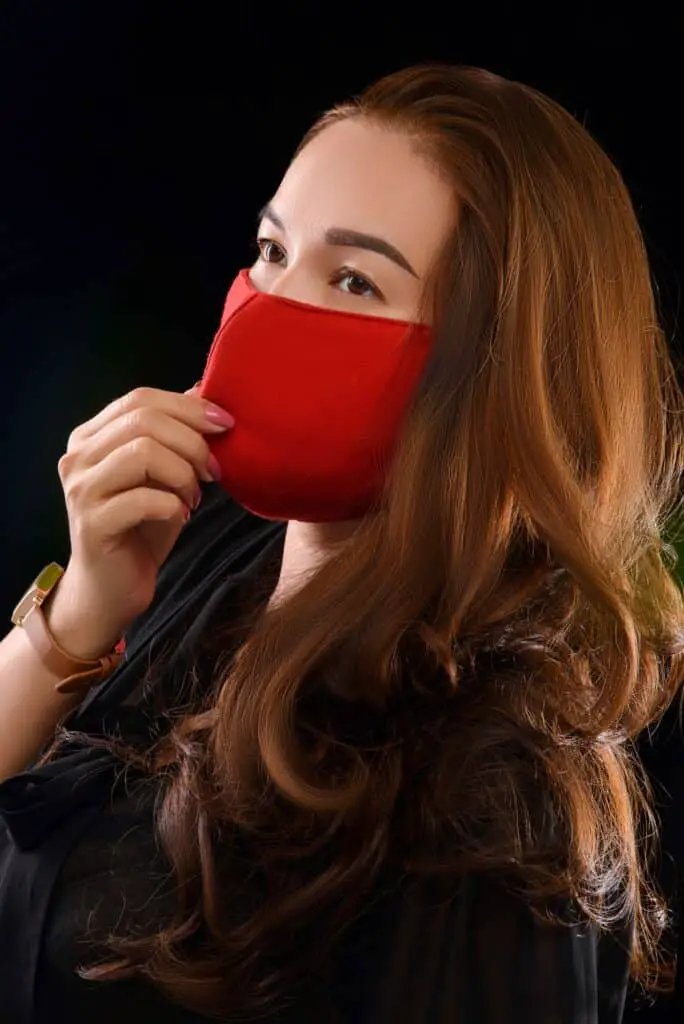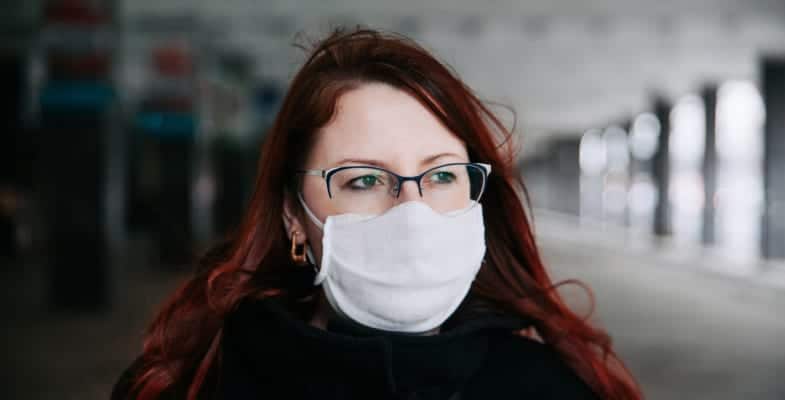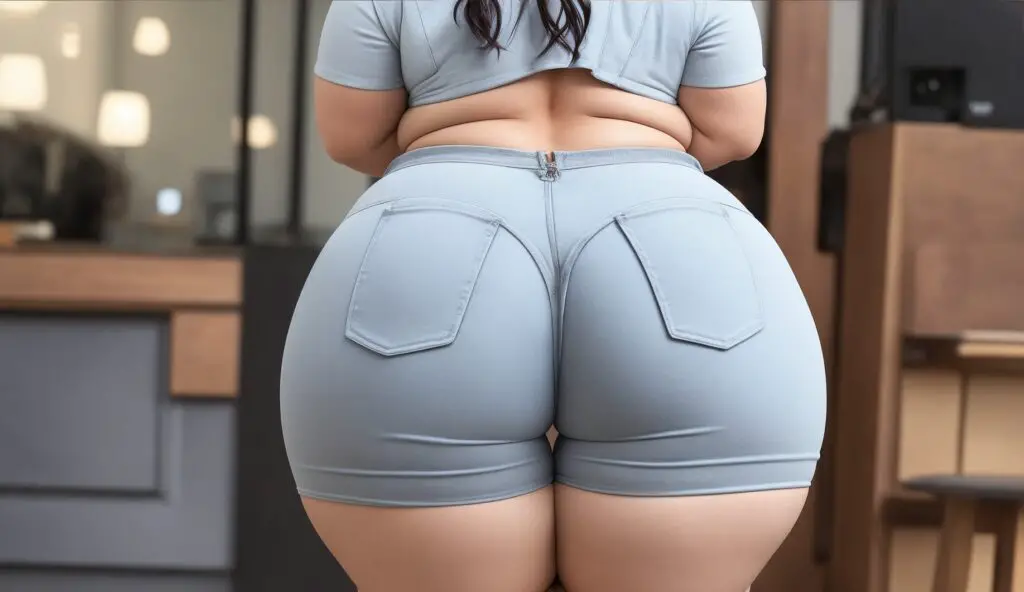Face masks are an accessory you can’t go without these days. The only problem is you have no idea how to correctly size your face mask so it’s not too small nor sliding down your nose. How do you find a face mask that fits?
We recommend the following tips when shopping for a well-fitting face mask:
- Calculate your facial measurements
- Try an assortment of sizes
- Make sure your mask has the features you need
- If all else fails, hack your way to a better fit
In today’s post, we’ll tell you everything you need to know to track down a face mask that fits your head more comfortably so you’re better protected from any virus. Let’s begin!
4 Handy Tips for Finding That Perfect Face Mask Fit

1. Measure Your Face
A face mask should fully cover the nose and mouth. It’s okay if the mask sits comfortably at your chin or even covers the chin, but this is not necessary. Your mask should rest at the bridge of your nose with no gaps above or underneath the mask.
If your face mask is too tight, then it can leave uncomfortable marks on the skin, not to mention become painful and irritating to wear throughout the day. Yet masks that are too loose will begin slipping off the bridge of your nose as you speak or otherwise open your mouth. You’ll spend all day pulling up your mask, inadvertently touching your face and increasing the risk of viral spread every time you do.
Sure, some people get lucky when it comes to finding the right face mask, especially if they have a smaller head, because there’s really no other appropriate size for those people but a small. For everyone else, to ensure you have your sizing correct, you’ll want to measure your face.
You will definitely need a second person for this, as you can’t see what you’re doing when you have a ruler that close to your own face. A flexible tape measurer will give you more accurate results, so use that if you can.
Here are the steps to follow when measuring your face for a well-fitting facial covering.
Start at your face’s centerline, which is at the exact middle of your face. Keep going down to your mouth, then stop at your mouth’s outside corner, about an inch from there. This is where you want your facial mask’s outer edge to rest against, at least an inch or two away.
If your measurement is 4 inches, then you need a small mask. This is generally for people who weigh 100 to 145 pounds, but not exclusively. If your measurement is 4.5 inches, then you should get a medium mask, which may correlate with those who weigh 150 to 249 pounds. The large is for faces over 5 inches, or those who weigh more than 250 pounds.
2. Go a Size up and Even a Size Down
Measuring your face using the above steps is a great place to start, but there’s a bit of a problem to be wary of. You see, from one face mask manufacturer to another, their measurements might differ slightly. That means if you’re usually a medium with a face mask brand and you decide to jump ship to another, you could be a large for them.
If you’re buying homemade face masks, which have popped up all over the place throughout the pandemic, such as from Etsy or even off the Facebook Marketplace, then the fit is even more variable.
It’s not like face masks are very expensive, but you absolutely need them if you plan on leaving your house, so the inconvenience of one not fitting is a pain. That’s doubly true if you’re really relying on that one mask and then it comes in the mail and doesn’t fit you.
If you are shopping for a face mask online, then we recommend you use the measuring system that manufacturer favors. For example, Cambridge Mask Co. has an informative blog post about how your face size and body weight correlates to the mask size you need. Their masks start as tiny as extra small for children and are also available in extra-large, with four sizes in between.
A-Line Hawaii, another mask brand, has face masks in XXS, which is super-tiny and again likely intended for kids. On their sizing chart, they also suggest a few of their own masks.
If you’re not sure if you measured your face correctly (or if your friend did it), then it doesn’t hurt to order two masks, including one a size bigger and the second a size smaller than what you think you need.
This way, you can ascertain that your face mask will fit either way. If it’s a close fit but not quite perfect, then we would advise you to keep reading, as we’ll have hacks for customizing a mask fit a little later in this article.
If you feel bad or selfish for buying more than one mask, you can always give the one that doesn’t fit to another member of your family or a friend.
3. Make Sure Your Mask Has All the Necessary Features
Today, face masks are more fun than they’ve ever been. You can buy masks that make it look like you have a different, more cartoony mouth and nose than what’s really underneath. You can also shop for masks in patterns and prints or those with cool slogans. You can even buy trendy, fashionable face masks with fringes and other chic touches that match all your outfits.
A face mask is always better than none, but more so than their looks, you want to shop for masks that have as many of these features as you can find.
Filters
If your face mask has room for a filter, it will include a pocket on either end of the mask on the side you wear against your face. The filter may or may not come with your purchase.
Filters are most common in cloth masks, especially those you might have bought online from a homemade seller. Since these masks may use a loose weave or a thinner fabric, they need extra protection in safeguarding you from exposure to airborne particles. These particles, if inhaled, are what will likely cause a case of COVID. This article from Today cites Missouri S&T data that mentions how, on its own without a filter, looser fabrics may prevent 20 percent of particles from getting through the mask. Using a HEPA filter or something akin to that increases your virus protection to between 80 and 90 percent, which is much better.
Even extra fabric can double as a filter if you can’t find a HEPA filter in stores or online. The Today article mentions doing a light test to determine if your mask is sufficient sans filter. If your mask under a strong light source has visible holes in the weave, then you need a filter.
Loops or Ties
All face masks have loops that fit around your ear, or at least some variation of that feature so the mask will attach to your head. Others may include more advanced loops or ties so you can adjust the fit so it’s perfect for you. This is always a nice feature to look for, especially if you frequently have issues with mask fit due to your head size.
Nose Wire
Your mask fits pretty well if you don’t talk or move your head too much. As soon as you’re up and doing things as well as conversing with others (while maintaining social distancing, of course), the mask begins slipping down your face.
As we said before, this is a great way to end up accidentally touching your face, which could put you at an elevated risk of getting sick. Having a nose wire in your face mask will secure the mask to the bridge of your nose.
The wire may be internal, so you won’t necessarily see it. Make sure then as you shop online or at a store for a face mask that you look at the description/packaging to confirm your mask has a nose wire. Both cloth and paper face masks may include these wires, so you have your pick.
When you put the mask on, pinch the nose wire with two fingers and shape it firmly against the bridge of your nose. The mask will be more likely to stay in place. If your mask if reusable, then flatten the nose wire before you wash your face mask and then shape it again the next time you need the mask.
4. Know the Hacks for Customizing Your Face Mask Fit
You have to remember that long before the pandemic changed the way we live that dentists, nurses, doctors, and other medical professionals would wear face masks days in and day out. They continue to do so to this day, so we’d say they know a thing or two about face mask fit hacks.
Here are some of our favorites.
Make a Paper Mask into an N95-Style Mask
Olivia Cud, M.D. is a dentist who shared one great hack online, including a video if you’re the more visual type. Here’s how you can configure a paper mask for a better, closer fit.
Dr. Cud recommends taking the paper mask, folding it in half, and taking the mask loops on either side and tying a knot in both. The knot needs to be near the edge of the mask. Your hands should also be clean and recently washed before you start.
When you unfold your mask, there should be a small opening on either side due to how you tied the loops. Take the opening and push it inside out, effectively tucking it in. Then wear the mask.
Dr. Cud says this hack is especially handy for those people with smaller faces looking for an N95-style mask but with the paper masks you can find at any grocery store.
Reducing Ear Pressure with a Face Mask On
Are your ears extremely painful after a day wearing your face mask? Many people experience this pain, especially glasses wearers or those whose masks are too small and dig into their ears. Luckily, there’s an easy workaround.
Take either loop of your face mask and attach a paper clip to it. You can then use a stretchy string to connect one paper clip to another so the face mask goes around your head rather than your ears.
Shrinking a Too-Big Mask
If your mask is too big, you don’t necessarily have to spend all day pulling it up. You can try crossing the loops over one another for a firmer fit to the head. Washing the mask in the washer may shrink it too. If it’s a paper surgical mask you have, you can also tape and fold it so there’s less bulk.
Conclusion
When you find a face mask that fits, you can almost forget you’re wearing one. The tips and suggestions in this article will hopefully clear up a lot of the hurdles you’ve encountered when shopping for the perfect face mask. Good luck, stay safe, and be sure to check out some of our other health-related articles!



